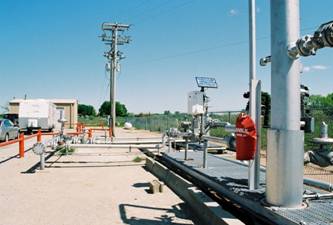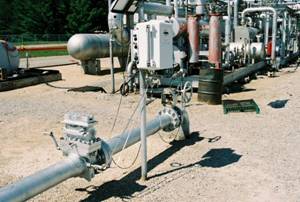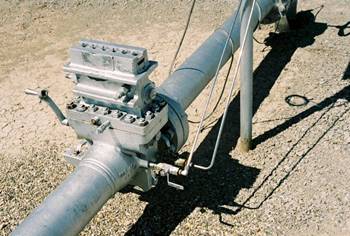|
Flow Research
has completed a new study on the worldwide pressure transmitter market, The
World Market for Pressure Transmitters, 5th Edition, that
determines the size of the pressure transmitter market in 2019 and forecast
growth through 2024. We have also made a special effort to determine
market size in 2020, and to determine the effects of the pandemic on the
pressure transmitter market.
 Our latest edition of this study,
published in June 2022, found that pressure transmitter revenues had grown
substantially during the previous five years. We also learned that the
total size of the worldwide pressure transmitter market over forty percent
of the worldwide flowmeter market in terms of revenues. Our latest edition of this study,
published in June 2022, found that pressure transmitter revenues had grown
substantially during the previous five years. We also learned that the
total size of the worldwide pressure transmitter market over forty percent
of the worldwide flowmeter market in terms of revenues.
We believe
that the size of the installed base together with recent networking
innovations in the acquisition of process data are two of the major reasons
why the pressure transmitter market is strong and will continue to hold its
own within the instrumentation world. And we look forward to bringing you
the latest data to show you exactly how fast the market is growing around
the world, where it is growing and why.
To make sure
we have the most complete picture possible, we contacted all known
manufacturers of pressure transmitters worldwide. We ask them for detailed
information about geographic segmentation, industries sold into, types of
pressure transmitters sold, and many other product segments.
The World Market for Pressure Transmitters, 5th
Edition:
- Determines worldwide and regional market
shares for pressure transmitters in 2019 and 2020
- Forecasts market growth for each of the four
types of pressure transmitters through 2024
- Identifies the industries and applications
where pressure transmitters are used, focusing on high growth areas
- Provides average selling process for all types
of pressure transmitters worldwide and by region
- Analyzes the products from the main companies
selling into the pressure transmitter market
- Offers strategies for success to manufacturers
who sell into the pressure transmitter market
- Profiles the main pressure transmitter
suppliers
- Identifies all of the factors causing the
market to grow
Why we need
pressure transmitters
Pressure is
one of the most widely measured variables in the process industries. In
process control, pressure measurement occurs in a variety of contexts,
especially in measuring the pressure exerted by liquid, steam, and gas. In
the oil & gas industry, wellhead pressures are measured in subsea and
topside locations. Pressure measurement is used for liquids in
pipelines to help create a liquid interface detector. In
water towers, pressure is measured to monitor and control water levels. Pressure
sensors are used to monitor the water pipe pressure in automatic sprinkling
systems. One of the most common measurements is barometric pressure,
which is used to predict the weather. In fact, the idea of atmospheric
pressure plays an important role in pressure measurement by pressure
transmitters.
Pressure
transmitters also have an important relation to three other widely measured
variables: flow, level, and temperature. Differential pressure (DP)
transmitters can measure both flow and level, and some pressure
transmitters also utilize temperature sensors to measure process
temperature. In some cases, this temperature measurement is combined with
pressure and volumetric flow measurements to compute mass flow.
 Pressure transmitters to the rescue Pressure transmitters to the rescue
While
pressure sensors can detect variations in pressure by converting changes in
resistance or capacitance to electrical values, these electrical signals
are relatively weak -- they are not strong enough to be transmitted over
distances or sent to a controller that may be located far from the pressure
sensor. To accomplish this, a pressure transmitter is required.
Pressure
transmitters are typically made up of a pressure sensor, an amplifier or
conditioning element, and an output signal. The output signal transmits the
pressure reading to a flow computer, controller, or distributed control
system (DCS). Pressure transmitters also typically contain a
display that shows the pressure value conveyed by the pressure sensor and
convert it into a standardized output, typically either 4-20mA or a digital
signal.
There are
four main types of pressure transmitters:
Absolute
pressure transmitters, which sense
absolute pressure, are referenced to a full vacuum. The pressure of the
measured media is compared against the reference pressure of an absolute
vacuum in a sealed reference chamber. Absolute pressure
transmitters are used to measure pressures that are not influenced by
atmospheric pressures. Vacuum transmitters are often used where high
accuracy is required, such as low-pressure measurement of vacuum
distillation columns.
Gauge
pressure transmitters, which sense
gauge pressure, are referenced to atmospheric conditions. Gauge
pressure transmitters are widely used in the process industries to measure
the pressures of liquid, gas, and steam.
Both absolute
and gauge pressure transmitters are growing in part by replacing pressure
gauges, switches, and transducers. Pressure transmitters are
more stable and reliable than pressure transducers. As end users
increasingly automate their operations, and build new plants, they are more
likely to choose pressure transmitters over pressure transducers. Absolute
and gauge pressure transmitters also have the advantage that, unlike
differential pressure transmitters used for flow, they do not have another
technology that is replacing them.
Differential
pressure (DP) transmitters measure
the difference between two pressures. They are used for both
flow and level applications. When used for flow applications,
they measure the difference between pressures on the upstream and
downstream side of a constriction in the pipe, called a primary element. This
difference in pressure is used to compute flowrate.
DP
transmitters have been used for more than 100 years to measure flowrate. Their
strong installed base gives them a pronounced advantage over other types of
flowmeters -- although they are being displaced in some applications by
new-technology flowmeters such as Coriolis and ultrasonic, especially when
higher accuracy and greater reliability is required.
Multivariable
pressure transmitters measure
two or more process variables. In many cases, they measure volumetric
flow, along with pressure and temperature, and use these values to compute
mass flow. Multivariable transmitters are becoming more widely
used for steam and gas flow measurement. While they are more
expensive than single variable DP transmitters, they typically cost less
than buying a DP transmitter along with single pressure and temperature
transmitters. Multivariable transmitters were first introduced
in 1992 by Bristol Babcock, now part of Emerson Process Management.
 Pressure and how it's measured Pressure and how it's measured
Pressure is a
state or condition we face every day. We speak of being “under
pressure," and talking about putting pressure on another person or
situation. Fundamentally, the idea of pressure is the idea of the
continuous exertion of force. From a measurement perspective, pressure is
force per unit area.
Just as there
are many applications for pressure measurement, there are also many
different instruments used for pressure measurement. These include
pressure gauges, pressure sensors, and pressure transducers, as well as
pressure transmitters. There are also specialized devices for
measuring pressure extremes, such as vacuum pressure.
Pressure
sensors
Pressure
sensors operate by sensing pressure and converting it into an electrical
quantity. Two of the main types used are piezoresistive and
capacitive. Piezoresistive is the most commonly used.
Piezoresistive
materials change resistance to the flow of current when they are strained
or compressed. A piezoresistive pressure sensor consists of a
micro-machined silicon diaphragm that has a piezoresistive strain gauge
diffused into it. The diaphragm is fused to a silicon or glass
backplate. The sensor contains resistors that are typically
arranged in the form of a Wheatstone Bridge Circuit. As pressure
increases on the silicon, it is more resistant to current passing through
it. As a result, the output of the Wheatstone Bridge is
proportional to pressure.
Capacitive
pressure sensors use a thin diaphragm as one plate of a capacitor. This
diaphragm is usually metal or metal-coated quartz. The diaphragm is
exposed to a reference pressure on one side and to the process pressure on
the other. Pressure changes cause changes in the capacitance. Pressure
changes can be determined by monitoring the changes in capacitance values.
Pressure
transducers
Pressure
transducers resemble pressure transmitters, but they are generally lower in
cost and smaller than pressure transmitters. They often have loose
wires at one end and do not perform at the same level as pressure
transmitters. Pressure transducers are widely used in discrete
industries such as automotive and plastics. They are less typically
used in the process industries.
Pressure
gauges
Pressure
gauges are relatively inexpensive mechanical devices that, for the most
part, are read manually. One of the most well-known types is
called the Bourdon gauge, which was patented in France by Eugene
Bourdon in 1849. In 1852, Edward Ashcroft bought the American rights
to the design of the Bourdon gauge and founded the Ashcroft Manufacturing
Company to make pressure gauges for steam engines. This was the
beginning of the company that is today known as Ashcroft, Inc. The
company is located in Stratford, Connecticut and still sells
pressure gauges, along with a variety of other products including pressure
transducers and transmitters, pressure and temperature switches, and test
instruments.
Bourdon
gauges contain a thin-walled metal tube that is typically threaded into the
compartment whose pressure is being measured. As pressure
increases in the tube, the tube begins to straighten. On the
other end of the tube is a lever system that contains a pointer. As
the tube straightens, the pointer moves around a dial, indicating pressure
in pounds per square inch (psi). Common tube shapes include
curved or C-shaped, spiral, and helical. This is a mechanical
device that is manually read. Another type of mechanical gauge
that operates in a similar fashion and also contains a pointer is called a
diaphragm gauge.
Traditional
gauges such as the Bourdon and diaphragm gauges are sensitive to vibration
and condensation. Another type is called a “filled” pressure
gauge, and it is filled with a viscous oil. This design has
fewer moving parts than the traditional pressure gauges and is more
reliable. This design dampens pointer vibration and is not susceptible to
condensation.
Order today
Flow Research
has been researching pressure transmitters since 2004, so we can say with
confidence that our proven approach brings you the most complete,
comprehensive, and current research possible. Please check out our Overview and see for yourself!
Differential
Pressure Articles
Pressure
Articles
Links
to DP Transmitter Suppliers
The
World Market for Pressure Transmitters, 4th Edition
Released in May 2015
The
World Market for Pressure Transmitters, 3rd Edition
Released in August 2011
The
World Market for Pressure Transmitters, 2nd Edition
Released in October 2007
The
World Market for Pressure Transmitters, 1st Edition
2004 - Provides historical reference
The
World Market for Differential Pressure (DP) Flowmeters and Primary Elements
January 2007
|